MUSTELID’s rig and rigging are original. They should work, but might not work.
Southeast Alaska is criss-crossed by long runs of water between shorelines of varying height. Winds tend to blow mostly up or down them. Mostly.
Our intent is to sail from a beam reach to a run, and row the rest. Any slight windward ability in this rig is for the sometimes miles-long transits from one side to another. Any small lift can save miles of rowing, with wind on the nose. But, should things get contrary, we can always hunker down until conditions favor us.
For remote cruising, we built the rig of found materials–conifer saplings. The six identical sails are interchangeable and redundant. We led our lines aft then forward again to the cockpit. The masts should come down and stow easily and out of the way for rowing.
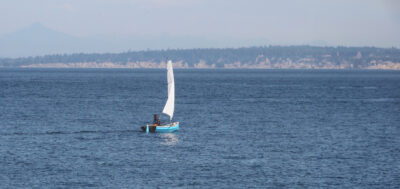
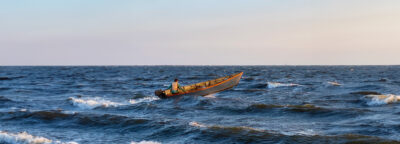

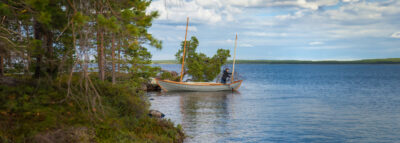
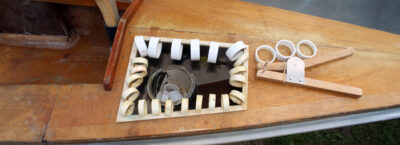
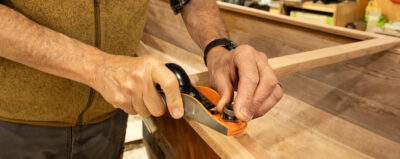
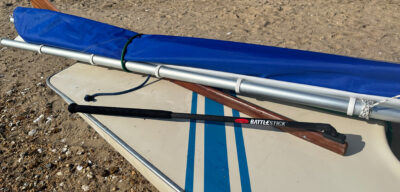
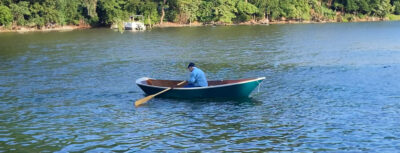
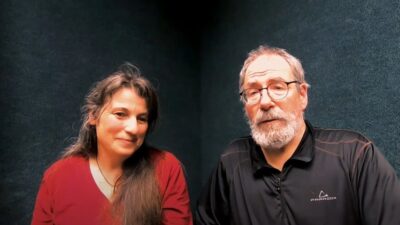
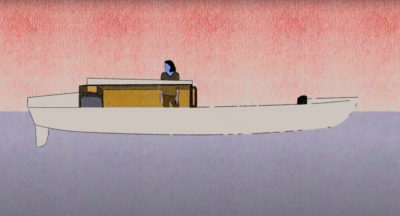
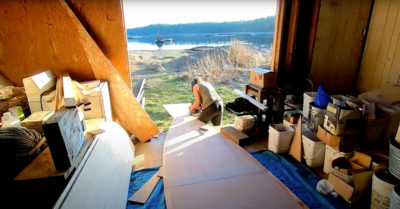
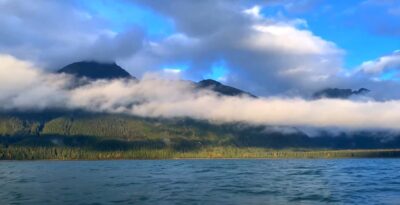
The reefing system is sweet. Ingenious. Fun.
Hi Thomas,
We agree! We drew inspiration from Holopuni QuickRig, but turns out had had exposure to it from an earlier date via the Sea Pearl 21, which used the same rig without naming it. We’d followed Stephen Ladd’s voyages in his decked SP 21, so must have run into it then.
Our small contribution is to sheet to the sliding grommet (rather than boom’s end), which greatly reduces stress on the booms, and which in turn allows much lighter booms. Neither of those two rigs had done that to our knowledge.
Part of the consequent fun, for us, is to eliminate expensive track, carbon fiber and Kevlar layup in favor of simple saplings. The rest is reverse-engineered… hard to say if we took the same path as we never got a good look at the commercial arrangements.
Dave Z
An astute viewer asked about the term HMD used in Episode 5, referring to the ‘cutting-board plastic’ used here and there around the boat (mast steps, chafe guards, fairleads).
I was assured that the common term, UHMW (Ultra High Molecular Weight) plastics, were now simply called HMD (High Molecular Density) by a plastics vendor when we ordered windows for WAYWARD about eight years ago. Today, I was able to find one reference to it, but apparently, the term didn’t stick.
Incidentally, it’s locally mnemonized as ‘Us Highliners Make Wads’. It’s used for fish-cutting tables, guardrails, various bits of deck hardware and furniture. It floats and, unfortunately, a lot of it ends up on beaches where we find and stockpile select bits. Polyethylene pipe is another beach-sourced material that’s both slippery, non-brittle and UV-resistant.
Livin’ in the Neo-Plasticene. 8/
Dave Z